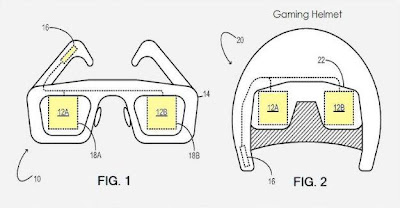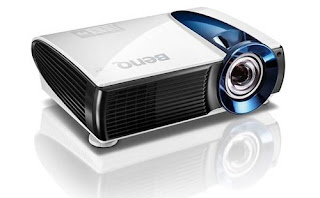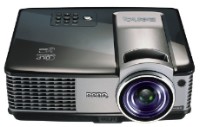Some people think that 3D projectors are simply for entertainment purposes, that they hold no real value outside of watching a movie or playing a video game in the third dimension. However, recent studies have discovered that this is entirely inaccurate. New research is showing that the use of 3D projectors, along with other 3D technology, in the classroom is improving the concentration and test results of students.
This new research is being carried out by the International Research Agency at the bequest of Texas Instruments. Texas Instruments has invested a lot in classroom technology through calculators alone but is also one of the foremost chip technology experts in the world. In addition to that, the company saw the introduction of 3D projectors and 3D glasses to class members that were participating in the research.
The International Research Agency monitored the students and discovered that 86% of them achieved better results in the post-test than they did in the pre-test when using 3D technology. It was also discovered that only 52% improved in the control classes, or the classes that were only given 2D technology for the post-test.
In the 3D in Education White Paper, Professor Anne Bamford, who is heading up the research, stated, "Individuals improved test scores by an average of 17% in the 3D classes, compared to only an 8% improvement in the 2D classes between pre-test and post-test. The teachers commented that the pupils in the 3D groups had deeper understanding, increased attention spans, more motivation and higher engagement."
Moreover, the research also studied classes in seven countries across Europe that are adopting the 3D technology. These countries included the United Kingdom, France and Sweden. The studied surveyed 740 students in 15 schools and involved 47 teachers.
3D projecting may still be a primarily entertainment-driven market, but the potential for some serious classroom benefits are evident. I mean, an 86% increase is substantial at any level and it will be interesting to see what other findings the International Research Agency and Texas Instruments uncover.
Source: Projector Point - Classroom 3D projectors improve pupils' performances
This new research is being carried out by the International Research Agency at the bequest of Texas Instruments. Texas Instruments has invested a lot in classroom technology through calculators alone but is also one of the foremost chip technology experts in the world. In addition to that, the company saw the introduction of 3D projectors and 3D glasses to class members that were participating in the research.
The International Research Agency monitored the students and discovered that 86% of them achieved better results in the post-test than they did in the pre-test when using 3D technology. It was also discovered that only 52% improved in the control classes, or the classes that were only given 2D technology for the post-test.
In the 3D in Education White Paper, Professor Anne Bamford, who is heading up the research, stated, "Individuals improved test scores by an average of 17% in the 3D classes, compared to only an 8% improvement in the 2D classes between pre-test and post-test. The teachers commented that the pupils in the 3D groups had deeper understanding, increased attention spans, more motivation and higher engagement."
Moreover, the research also studied classes in seven countries across Europe that are adopting the 3D technology. These countries included the United Kingdom, France and Sweden. The studied surveyed 740 students in 15 schools and involved 47 teachers.
3D projecting may still be a primarily entertainment-driven market, but the potential for some serious classroom benefits are evident. I mean, an 86% increase is substantial at any level and it will be interesting to see what other findings the International Research Agency and Texas Instruments uncover.
Source: Projector Point - Classroom 3D projectors improve pupils' performances




 Find out what is going on in the
Find out what is going on in the 












 Sony has just recently launched its all new VPL-VW1000ES projector, claiming that this device is the world's first 4K projector, meaning it's pushing around 10,000,000 pixels. The company is also touting this device as its flagship projector and has currently only released the device in India. Whether or not it will make its way to other countries any time soon (if at all) still remains to be seen as Sony hasn't disclosed any information on that front just yet..
Sony has just recently launched its all new VPL-VW1000ES projector, claiming that this device is the world's first 4K projector, meaning it's pushing around 10,000,000 pixels. The company is also touting this device as its flagship projector and has currently only released the device in India. Whether or not it will make its way to other countries any time soon (if at all) still remains to be seen as Sony hasn't disclosed any information on that front just yet..
 At the Consumer Electronics Show (CES) in Las Vegas, Vivitek showed off an early look at their upcoming Qumi Q5, the latest addition to the company's popular line of DLP pocket projectors. Not a lot was revealed about the device but what was divulged was that Qumi Q5 will have a native 1,280 x 800 WXGA resolution as well as a 500 lumen output.
At the Consumer Electronics Show (CES) in Las Vegas, Vivitek showed off an early look at their upcoming Qumi Q5, the latest addition to the company's popular line of DLP pocket projectors. Not a lot was revealed about the device but what was divulged was that Qumi Q5 will have a native 1,280 x 800 WXGA resolution as well as a 500 lumen output. Pico projectors currently have the ability to turn any surface into a screen. However, what they can't do is turn that same surface into an interactive projector screen and average, everyday items into a remote control. Until now. Developed by a team from the Technische Univerität Darmstadt in Germany, LightBeam pairs a pico projector with a depth-sensing camera. This allows it to provide a lot of interactive features, much like Microsoft's Kinect sensor, to projected presentations.
Pico projectors currently have the ability to turn any surface into a screen. However, what they can't do is turn that same surface into an interactive projector screen and average, everyday items into a remote control. Until now. Developed by a team from the Technische Univerität Darmstadt in Germany, LightBeam pairs a pico projector with a depth-sensing camera. This allows it to provide a lot of interactive features, much like Microsoft's Kinect sensor, to projected presentations.
 BenQ America, one of the most popular projector manufacturers in the country, has just unveiled an all new pair of short-throw video projectors specifically designed for use in the education industry. In addition to that, both of the new projectors use mercury-free blue core light engines for increased safety and environmental friendliness.
BenQ America, one of the most popular projector manufacturers in the country, has just unveiled an all new pair of short-throw video projectors specifically designed for use in the education industry. In addition to that, both of the new projectors use mercury-free blue core light engines for increased safety and environmental friendliness. Renting projectors for meetings, events, trade shows, and projectors is easy at
Renting projectors for meetings, events, trade shows, and projectors is easy at 

 One of the coolest new pieces of tech at CES 2012, at least in the projector world that is, is the LightPad, a pico projector combined with a keyboard and trackpad. All you have to do to make this thing work is plug your phone into the device and it beams whatever is on your screen to a nearby wall. However, that isn't the coolest part. The main feature for the LightPad is that you can flip the lid up and turn it into a makeshift laptop with software that adds a virtual mouse.
One of the coolest new pieces of tech at CES 2012, at least in the projector world that is, is the LightPad, a pico projector combined with a keyboard and trackpad. All you have to do to make this thing work is plug your phone into the device and it beams whatever is on your screen to a nearby wall. However, that isn't the coolest part. The main feature for the LightPad is that you can flip the lid up and turn it into a makeshift laptop with software that adds a virtual mouse.